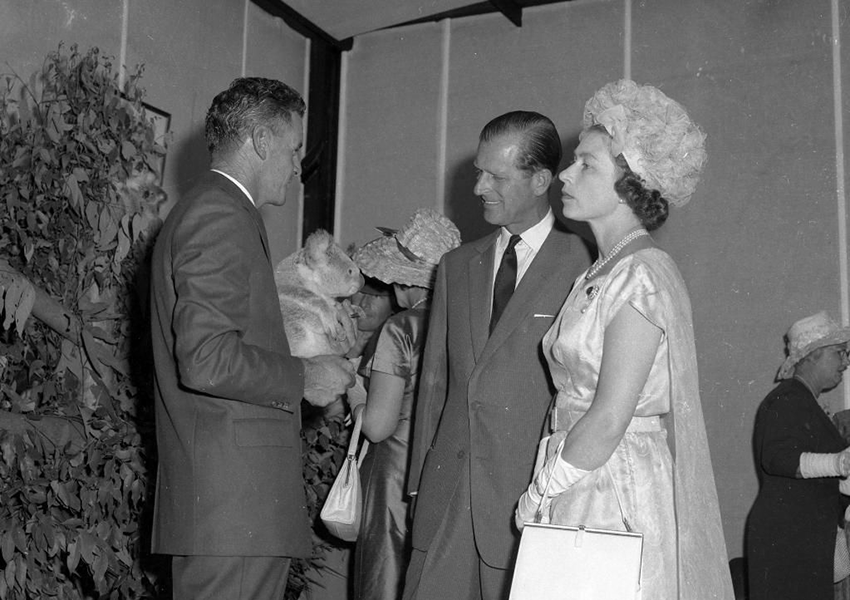
Saving Australia’s wildlife is the best way to honour Prince Philip’s legacy

Opinion by MERRILL WITT
Prince Philip’s remarks at the opening of the Australian Mint in 1965, recently aired by Geraldine Doogue on RN’s Saturday Extra, were an early marker of his impressive credentials as an environmentalist.
At that time, the Duke of Edinburgh didn’t hold back in warning his audience that Australia’s native wildlife was at risk of extinction.
“Having had a good look at these coins,” he said, “I simply can’t resist the temptation…to say that I hope that the animals shown in these designs will also be allowed to exist in the wild.”
“These animals are unique to Australia and, of course, only Australians can save them from extinction.”
To illustrate how dire the situation could become for the survival of Australia’s national symbols, the Duke pointed to the then precarious future of America’s bald eagle, “And if you think this is an exaggeration to suggest that these or any animals are in any danger,” he said.
“Let me remind you that in the absence of drastic action, it’s only a matter of time before the United States’ symbol of the great bald eagle will only exist on their coins and seals.”
Only 487 nesting pairs of bald eagles remained in the United States at the time Prince Philip gave his speech, down from an estimated 100,000 pairs in 1782 when the bald eagle was first designated as the young country’s national symbol.
But, fortunately, two years later, the US government did take drastic action.
A 1967 listing of the bald eagle under the Endangered Species Preservation Act spring-boarded a host of environmental protections that allowed the US Fish & Wildlife Services to declare in 2006 that the bald eagle is an “Endangered Species Act success story,” estimating that breeding pair numbers had recovered by then to 9,786.
From optimism to pessimism
Prince Philip ended his remarks at the Australian Mint on an optimistic note, saying he “held great hope that the newly formed Australian Conservation Foundation will be able to do something about this very difficult problem here in Australia.”
But 32 years later, he was far less sanguine about Australia’s prospects for holding onto its wildlife.
The Sydney Morning Herald’s Associate Editor Tony Wright recently recalled in an opinion piece, Beneath the gaffes, the Duke ran deep, that in 1997 Prince Philip told him that “if he were to visit Australia, the authorities wouldn’t be happy with his views.”
According to Wright, he then “launched into a passionate assault on what he considered the scandal of land clearing, particularly in Queensland.”
The Duke’s well-informed fears about Australia wiping out its wildlife were soon backed up by a World Wildlife Fund Australia (WWF) report, which found that between 1997 and 1999 an average annual clearing rate of 446,000 hectares of remnant native vegetation in Queensland had led to the staggering loss of 190 million trees, over 2.1 million mammals, 8.5 million birds and 89 million reptiles.
Coincidentally, the Duke was a founding member of the WWF UK, its president from 1965 to 1982 and then president of the WWF International from 1981 to 1996. He also established the Duke of Edinburgh’s Award in 1956, which has inspired hundreds of thousands of young people in 130 countries to pursue outdoor challenges and voluntary service.
Australia’s probably lucky that in his twilight years Prince Philip refrained from embarrassing our government by speaking out too loudly about Australia’s continuing failure to protect its biodiversity, exacerbated in recent years by the acceleration in land clearing rates in Queensland and NSW.
The Duke would no doubt have been sad, but probably not surprised, to have learned that the WWF has accused the Australian government of failing to protect our national icon, the Koala.
It recently issued a report documenting the clearing of 177,411 hectares of known or likely koala habitat in Queensland and NSW between 2012 and 2018.
Addressing our biodiversity crisis and putting in place robust protections to save our unique naive wildlife is undoubtedly the best way Australia can honour Prince Philip’s legacy as a forward-thinking and passionate environmentalist.









